The italian childhood fantasy tale of 1883 by Carlo Collodi, is a covert telling about the path towards spiritual enlightement as the name of the main character Pinocchio alludes to: occhio in italian means eye, and pin is a reference to the pineal gland in the brain; the name of the puppet therefore refers to the third eye, the organ of spiritual conjunction and illumination in the human body.
The original book by Collodi is full of references to Freemasonry, the Kabbala and Theosophy, that are beyond the scope of my analysis, and I will just point out a few important elements of the cartoon animation version of 1940, in link with our study:
Pinocchio is a puppet that wants to become a real boy. The animated puppet itself represents a human being, that is not truly real and whose life is artificial because the inner alchemical wedding hasn’t been accomplished. His ”conscience”, Jiminy Cricket, represents some sort of a daimon.
Pinocchio is told by the Blue Fairy that he must be « brave, truthful and unselfish » if he wants to become a real boy and follow « the straight and narrow path ». He is also told that he must choose between right and wrong:
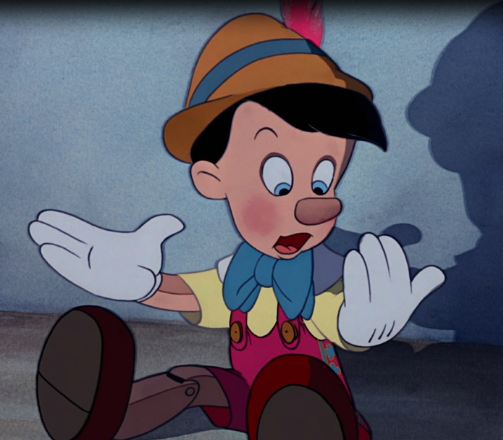
Pinocchio looking alternatively at his right and his left hand while saying « right » and « wrong ».
On his way to school, Pinocchio meets two swindlers who convince him of becoming an actor in a puppet show. This represents living a life of imitation and CONforming to the world and is a form of lie:
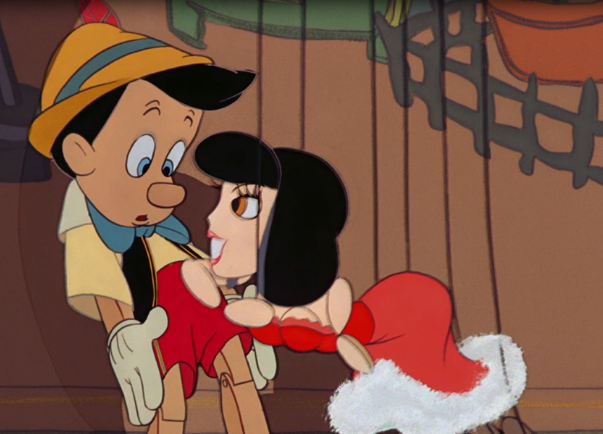
A female puppet trying to seduce Pinocchio.
Pinocchio is later confronted by the Blue Fairy for his lying:
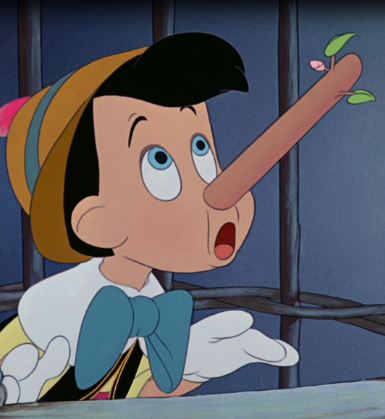
Pinocchio lying to the fairy.
The elongating nose of Pinocchio when he is lying is one of the main symbolic elements of the story. The nose refers obviously to the Air element and correspond to the middle finger of the human hand.
After that, Pinocchio is led to get on a boat to a place called Pleasure Island, where young boys go to live a hedonist life of sins and destruction and are exploited. Pinocchio then starts to transform into a donkey. A donkey, is often in symbolic representation, a reference to the lower animal self that needs to be
overcome, not let loose.
With the help of Jiminy Cricket, Pinocchio escapes Pleasure Island and go on to save his father Geppetto that has been swallowed by a whale. After having successfully saved everybody from the whale, Pinocchio is found like dead on the beach. But in the end Pinocchio is alive and because he has been << brave, truthful, and unselfish >>, has transformed into a real little boy. The end.
What i found the most interesting gnostic elements of the Walt Disney version of Pinocchio, is the two characters they added to the story: Cleo the goldfish and Figaro the cat. The chemistry between them during the unfolding of the story, is a representation of the evolving inner world of Pinocchio (human creature).
Let me explain:
Cleo the goldfish represents our Twin Sister symbolically. The name Cleo is an obvious reference to Cleopatra, the Egyptian Queen, because the Twin Sister is our Queen. Cleo also has great beauty and grace. The goldfish (gold) symbolism alludes that she is our value. In her bowl is a little castle with a drawbridge and that seems to me a similar symbolic representation than the oyster with the pearl inside that often represents our Twin Sister:

Cleo, in a world of her own.
The other added character is a cat named Figaro. Figaro represents the incarnated male spirit. The latter is personified by a cat because it is a naturally egoistical and ego centrical animal. The name Figaro is most likely a reference to the Mozart opera titled The Marriage of Figaro based on a play by Beaumarchais and alludes to the alchemical wedding that must take place between the male spirit and his Twin Sister.
At the beginning of the story, Figaro isn’t interested at loving Cleo because he is immature and egoistical:
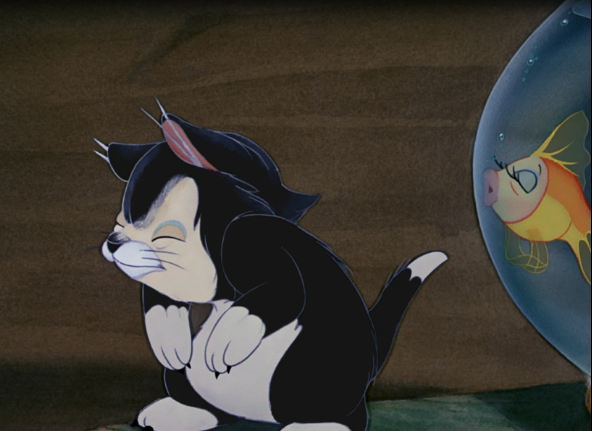
Figaro in mono mode
But at the end of the cartoon, when Pinocchio becomes a real boy, Figaro is shown jumping into Cleo’s bowl and kissing her on the mouth, thus symbolizing their union.
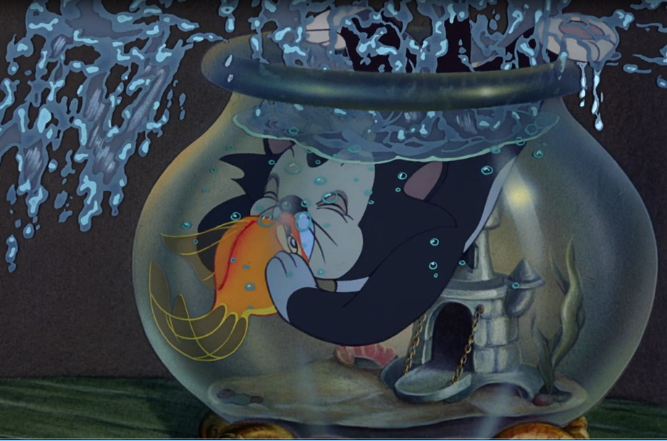
How to become real 101.
